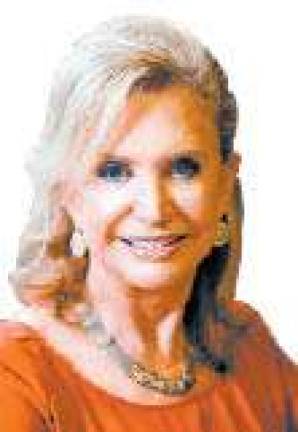Letter: The economic engine of East Side growth

Earlier this month, President Obama stood at the Tappan Zee Bridge and made the argument that infrastructure investment leads to more jobs and a stronger economy. He pointed out that America became an economic powerhouse as a result of our investment in infrastructure, but that our investment in transportation has shrunk by 50 pertcent in the last 50 years. Europe invests twice as much as we do; the Chinese invest four times as much as we do. And by some measures, America now ranks nineteenth in the world in terms of the quality of our infrastructure. While that speaks volumes about the need to put aside politics and work together to address the problem, I am proud to say that I have worked to keep New York City ahead of the curve in terms of investing in infrastructure.
Over the last few years, we've accomplished quite a bit on the East Side, and in the district I represent, when it comes to expanding our economy. We've done so by backing innovative and diverse approaches to economic development, by investing in mass transit, improving our bridges and expanding our parks. We've been strong supporters of business incubators. And we are focused intently on expanding education and jobs in the fields of science, technology, engineering and math (STEM).
The East Side is home to the two biggest infrastructure projects in the country -- the Second Avenue Subway and East Side Access. Together, they represent a combined federal investment of roughly $7 billion, money I am proud to have helped secure. Furthermore, these projects have already created roughly 47,000 jobs and are generating over $17 billion in economic activity.
These two projects are going to bring more people to the East Side and help them move around as they put more money back into the local economy. Phase 1 of the Second Avenue Subway is 65 percent complete and just two and a half years from its scheduled opening date. All tunneling and blasting has been completed, work is underway on all stations, entrances and ancillary buildings, and trackwork is being laid in the tunnels. My next challenge will be to make sure that we move seamlessly to the next phase of the Second Avenue Subway.
If the East Side is going to continue its economic growth, we must also have our eye on the future. Diversity is key. Jobs in the FIRE (finance, insurance and real estate) sector have powered our economy for years, but we should not be putting all our eggs in one basket. That's why I believe strongly in the importance of increasing the prevalence of STEM jobs. Between 2010 and 2020, employment opportunities related to STEM are expected to increase by 16.5 percent, nationally, or more than 8.5 million jobs over the next decade. Furthermore, STEM jobs pay on average 35 percent more than non-STEM jobs. But if we want to attract and retain young people interested in this field, we must provide strong support for STEM education. That's why I worked so hard to ensure that the Bloomberg Administration would choose Roosevelt Island for its new high tech graduate campus. Graduates will help New York's high tech industry grow and flourish. But we must make sure that this industry becomes a viable career choice for young women, who currently hold a very small portion of STEM jobs. I will be holding my second forum at CUNY Graduate Center for high school girls, to help bolster their interest in pursuing STEM education and jobs.
Another innovative way to fuel economic growth is through business incubators. Business incubators are public-private partnerships that encourage entrepreneurship by providing workplaces and support for tech start-ups, non-profits and creative freelancers. Business incubators have generated hundreds of millions of dollars in economic activity in New York, and I have secured millions of dollars in federal funding for incubators in my district. There are many ways that we can grow the economy and create jobs; but, more often than not, political posturing doesn't bring home the bacon. We need to come together and pass meaningful legislation to rebuild our roads and transportation systems, and support education and innovative industries, all of which will help the economy grow and put people to work.
Carolyn Maloney represents New York's 12 congressional district.